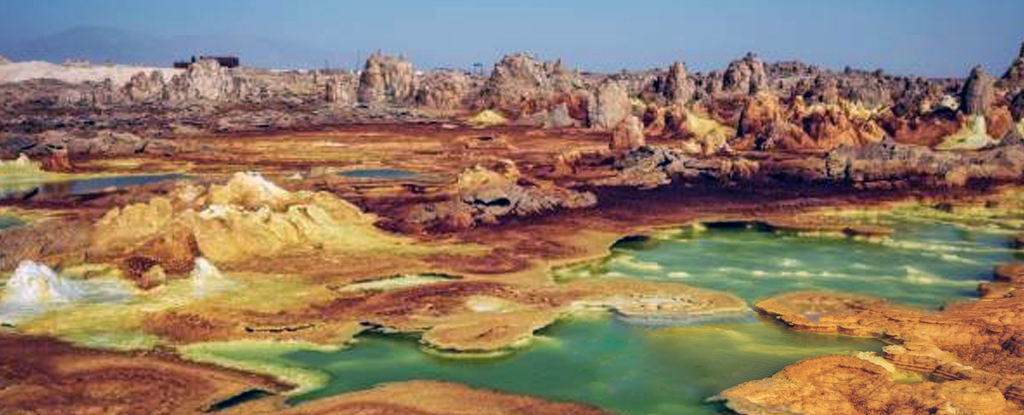How life came about on earth from a selection of non-living molecules is a stubborn mystery. Experiments can show us like important steps could have happened, but for every leap forward there are confusing dead ends.
Water, for example, seems to be an essential part of life from the beginning. Yet the process of waxing some of life’s most important components has a frustrating reluctance to get wet.
“We know that amino acids are the building blocks of proteins and that proteins are essential to life,” says Biochemistry engineer John Yin from the University of Wisconsin-Madison.
“In prebiotic chemistry, it has long been a question of how we could get these things to form bonds and threads in a way that could eventually lead to a living cell. The question is difficult because the specific chemistry involved tends to fail in the presence of water.”
The prevailing theory since the time of Charles Darwin has been that life emerges from a decidedly wet ‘primordial soup‘, making it difficult to reconcile the exact role water might play in the origins of these first sustained, self-replicating reactions.
So, University of Wisconsin-Madison chemical engineer Hayley Boigenzahn led a study of a simulated changing environment — one that alternated between wet and dry conditions that are easily replicated in nature with tidal and day/night cycles and changing weather can.
Boigenzahn’s team combined a selection of proven amino acids very easy to make naturally. As building blocks of proteins—units that can do the mechanical work of living processes—the resulting structures are a good choice to play an important role early forms of biology.
Unfortunately, getting these units to connect into longer chains is a challenge. In this case, the researchers used the amino acid glycine.
Then they added trimetaphosphate, a molecule, to their soup naturally produced in volcanoes.
Finally, the soup was treated with caustic soda (NaOH) to increase its pH.
Lo and behold, during the first hour of the experiment, glycine coupled to form a two-unit molecule called a dimer. This reaction releases protons, which in turn neutralize the pH required for dimerization, effectively slowing down the whole process.
As noted in previous research, as the pH of the solution became more neutral, the dimers slowly began to link together into slightly longer chains. However, as the solution dried out, the reaction rate increased, possibly due to the concentrations of the molecules crowding closer together, the team suspects.
“What we’re showing here is that it doesn’t necessarily have to be the same environment for all reactions,” says bow tooth. “They can occur in different environments, provided that the reactions that occur help to create an environment that is favorable for the next steps.”
A cycle of transitions between wet and dry conditions could grow the molecule into more complex proteins, some of which could fuel other chemical reactions involved in life.
“The fact that these response mechanisms have been known for many years and the link between them has received limited appreciation suggests that it may be worth paying more attention to the effects of proposed prebiotic responses on their environment, in addition to the effects on the environment.” the reactions”, Boigenzahn and team a notice.
Again, this isn’t the first hint that life’s origins may have been at the edge of the wet. Chemist earlier this year found free-floating amino acids more reactive at the air-water interface of tiny droplets. Furthermore, these reactions took place under normal ambient conditions without the need for other chemicals or radiation.
There is still a long way to go to understand all that this involves, but understanding the processes behind the origin of life could also open the door to new, more powerful chemistry-based technologies.
“Eventually, chemical systems could be created that could store information, adapt, and evolve,” says yin
“DNA stores information at a density thousands of times higher than that of a computer chip. If we could get systems that do this without necessarily being living cells, then you start thinking about all sorts of new functions and processes that happen at the molecular level.”
This study was published in Origins of life and evolution of the biospheres.





